Underground Air Storage: Renewable Energy's Hidden Battery
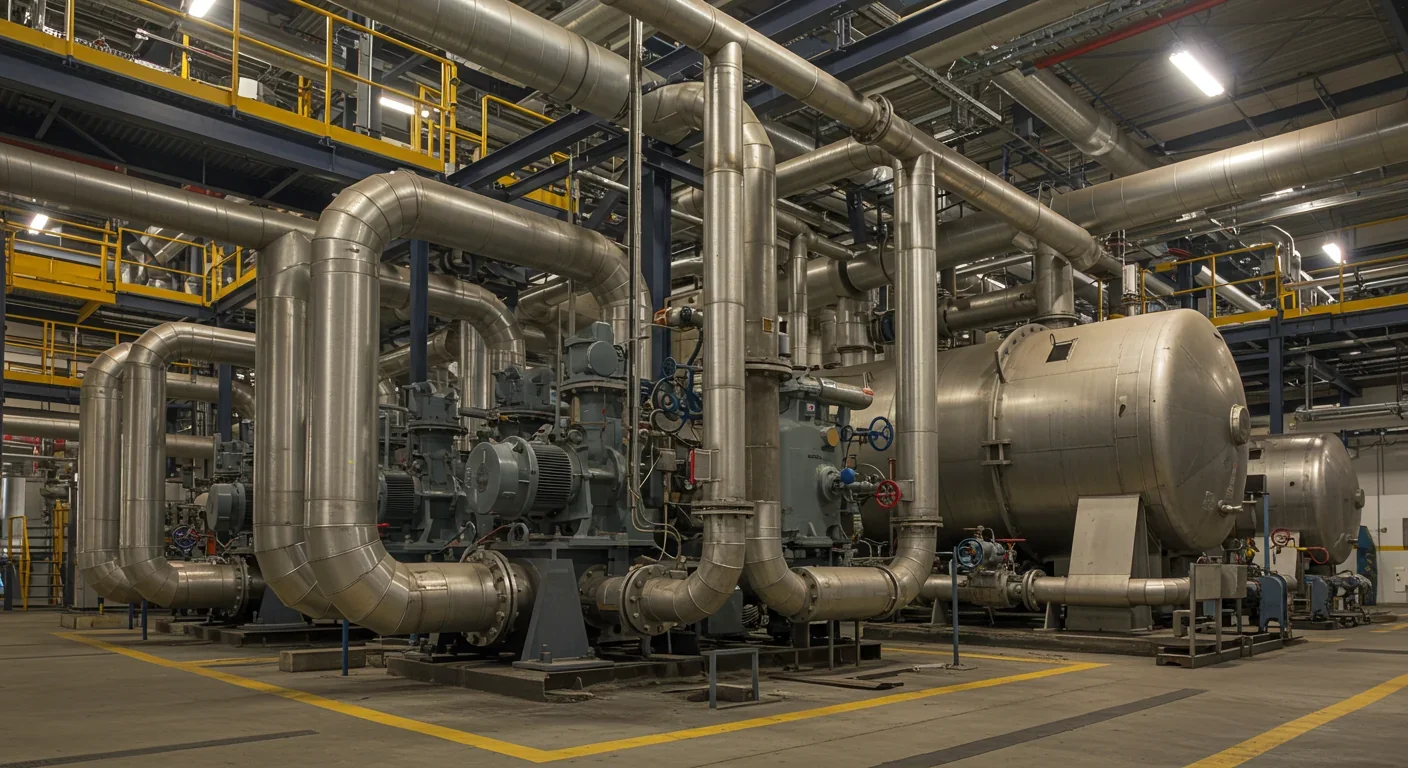
TL;DR: Seed banks worldwide preserve 1.3 million crop varieties as insurance against climate change, but face challenges in funding, access, and deployment. Community-led initiatives that keep seeds evolving in farmers' fields may be as important as frozen vaults.
By 2050, the world will need 60% more food than it produces today, but the planet will be 2°C hotter. Scientists predict that many of our current crop varieties won't survive the transition. Right now, deep in an Arctic mountain and scattered across 1,700 facilities worldwide, researchers are quietly assembling humanity's insurance policy: more than 1.3 million seed samples representing 13,000 years of agricultural history.
These aren't museum pieces. They're living blueprints for survival.
When Syrian civil war destroyed the genebank in Aleppo in 2015, researchers made the first-ever withdrawal from the Svalbard Global Seed Vault, nestled 430 feet inside a mountain on a remote Norwegian island. They retrieved backup samples of wheat and barley varieties, regenerated them in Lebanon and Morocco, and returned renewed seeds to the vault. The system worked exactly as designed, a black box of agricultural biodiversity that turned crisis into continuity.
But can it scale? Can static vaults filled with sleeping seeds keep pace with a climate that's shifting faster than evolution can respond? The answer is more complicated than you'd think.
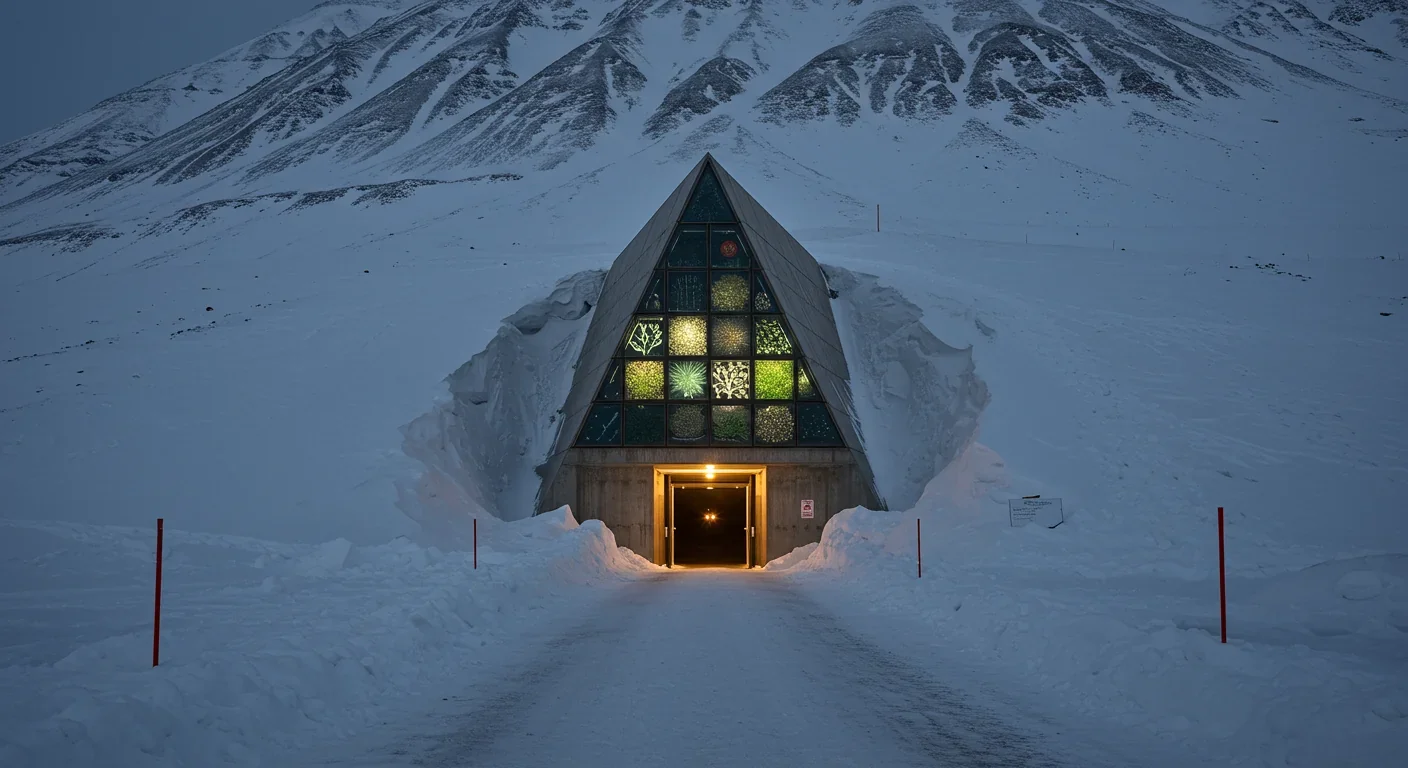
Here's what most people don't know about crop diversity: we've already lost 75% of it. According to the FAO's assessment, since the early 20th century, industrial agriculture and monoculture farming have erased three-quarters of plant genetic diversity. That's not just a number. It's thousands of varieties bred over millennia to handle drought, resist disease, or thrive in marginal soils that no longer exist anywhere except inside seed banks.
Without diversity, crops can't adapt. When a heat wave hits or a new pest emerges, genetic variety is what allows some plants to survive while others fail. Those survivors become the parents of the next generation. It's evolution's hedge fund, except we cashed it out decades ago.
We've lost 75% of plant genetic diversity since 1900. What remains exists largely in seed banks, scattered across 1,700 facilities that operate on shoestring budgets and inconsistent funding.
Today, roughly 1,700 seed banks operate worldwide as part of a global conservation network. They range from high-tech facilities maintained by international agricultural research centers to community-run seed banks in Guatemala and Kenya where farmers preserve indigenous varieties passed down through generations. Together, they hold about 750,000 samples of farmers' varieties and crop wild relatives in CGIAR gene banks alone.
The crown jewel is Svalbard. Built into permafrost in 2008, it stores duplicates from seed banks around the world at -18°C, creating a fail-safe in case of natural disaster, equipment failure, or war. It's the backup drive for the planet's food system. As of June 2025, it conserves 1,355,591 accessions, each representing a unique genetic line.
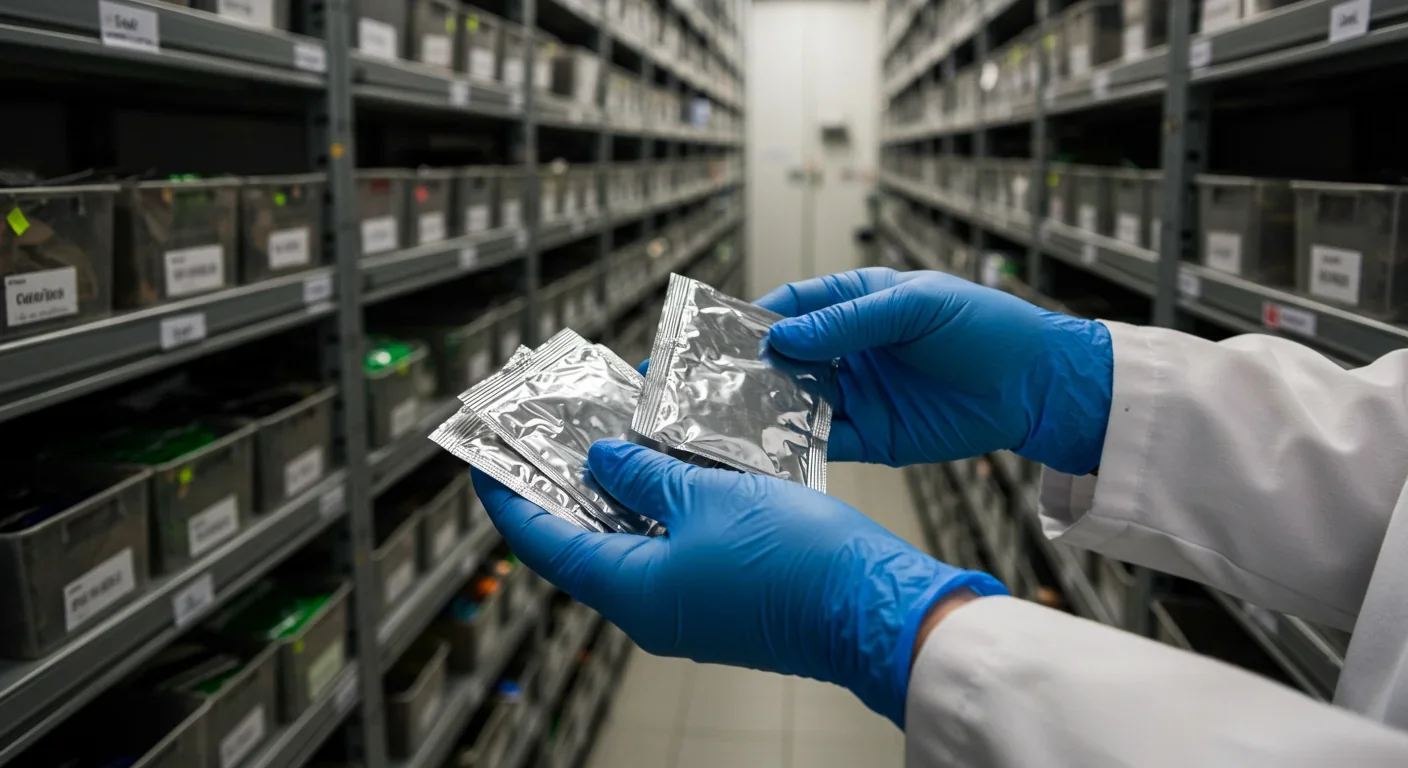
Walk into a seed bank and you'll see rows of metal shelving holding plastic containers filled with foil packets. Each packet contains seeds cooled to temperatures that slow their metabolism to near zero. Under ideal conditions, many seeds remain viable for decades or even centuries.
But "ideal" is doing heavy lifting there. Temperature stability matters more than anything. Even small fluctuations can cut lifespan in half. That's why recent research by Fiona Hay has been transformative. She found that drying seeds at 30-40°C before storage can double their lifespan compared to standard drying methods. "By drying them warmer, we let them finish maturing, and that makes a big difference," Hay explained. Higher temperatures mimic natural maturation processes that conventional protocols skip.
"By drying them warmer, we let them finish maturing, and that makes a big difference. Higher temperatures mimic what happens naturally."
— Fiona Hay, Seed Conservation Researcher
For seed banks in tropical regions where cooling infrastructure is expensive, this is a game-changer. It means longer viability with the same equipment, stretching limited budgets further.
Still, nothing lasts forever. Seeds have to be "regenerated" periodically by planting them, growing new plants, harvesting fresh seeds, and returning those to storage. It's labor-intensive and expensive. Miss a regeneration cycle and entire genetic lines can vanish silently, lost not to fire or flood but to bureaucratic oversight and funding gaps.
Seed banks are only useful if people can access them. That's where things get thorny.
The International Treaty on Plant Genetic Resources for Food and Agriculture governs how countries share genetic material. In theory, it ensures farmers and breeders worldwide can request seeds for research or crop improvement. In practice, benefit-sharing clauses and legal restrictions create friction. Countries that contributed seeds sometimes demand compensation if a profitable variety emerges from their genetic material. That slows things down.
Svalbard operates under an even more restrictive model. It functions like a safe deposit box. Norway doesn't claim ownership, but only the original depositor can withdraw their seeds. If a breeder wants to access a drought-tolerant wild wheat from Svalbard, they can't just ask. They have to convince the institution that deposited it to request a withdrawal on their behalf. That's by design, it protects sovereignty, but it also means Svalbard isn't a lending library. It's an emergency backup.
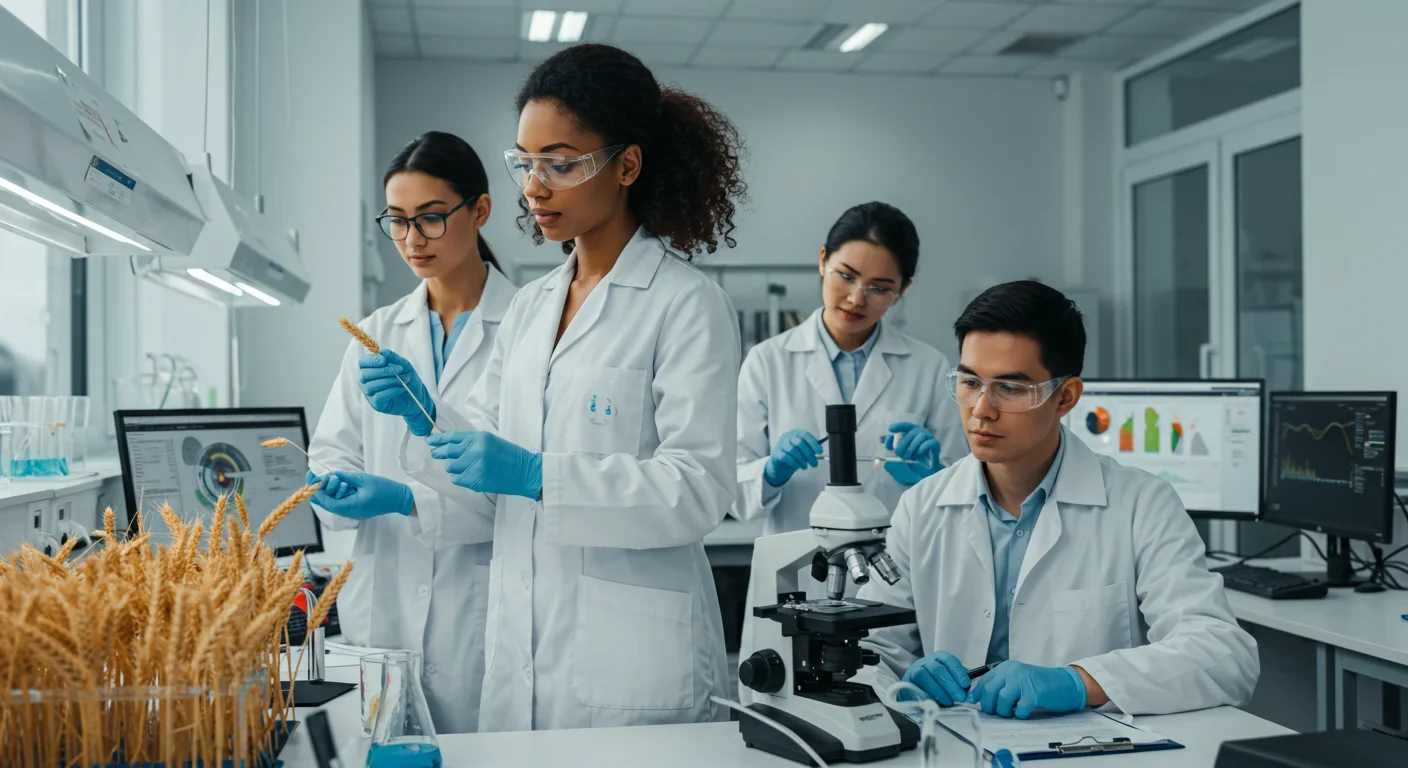
Meanwhile, the need is urgent. Crop wild relatives (CWRs) offer genetic diversity that commercial varieties lack. In the UAE, researchers are studying CWRs known for abiotic stress tolerance, traits like heat and drought resistance that could be bred into crops facing similar conditions elsewhere. Pangenomic studies reveal how these plants adapt at the genetic level, identifying specific genes that confer resilience.
Translating that knowledge into improved crop varieties takes years, even decades. You identify a useful gene, cross it into an elite breeding line, evaluate the offspring, and repeat the process multiple generations until you have a stable, high-yielding variety that farmers will actually plant. Seed banks shorten that timeline by preserving a wider gene pool, but they don't eliminate it.
Not all seed banking happens in bunkers. Some of the most effective work happens in farmers' fields.
In Guatemala's Huehuetenango region, the Association of Peasant Organizations of the Cuchumatanes (ASOCUCH) launched a community seed bank program in 2007. Today it serves 16,000 farmers. The model is simple: farmers deposit native seeds, climate-resilient varieties adapted to harsh local conditions. When extreme weather destroys a harvest, farmers can withdraw seeds to replant.
Feliciano Pérez Tomas, whose community uses ASOCUCH's seed bank, put it plainly: "Without the seed banks, it would have been disastrous." When frosts, floods, and heatwaves hit, his community had seeds that could handle it. Research by ASOCUCH found that cultivating native seeds tripled farmers' yields compared to commercial varieties.
Community seed banks in Guatemala tripled farmers' yields by preserving native varieties adapted to local conditions. When extreme weather hit, farmers had seeds that could survive.
That's not an accident. Native varieties have been selected over generations to thrive in specific microclimates. A 2022 survey by Terraformation identified more than 400 community seed banks operating in 96 countries. They preserve not just seeds but the knowledge systems that go with them: which varieties tolerate drought, which mature fastest, which taste best.
Community seed banks also function as living laboratories. Farmers don't just store seeds; they plant them, observe performance, and select the best performers for the next season. It's evolutionary breeding in real time, adapting crops to changing conditions faster than formal breeding programs ever could.
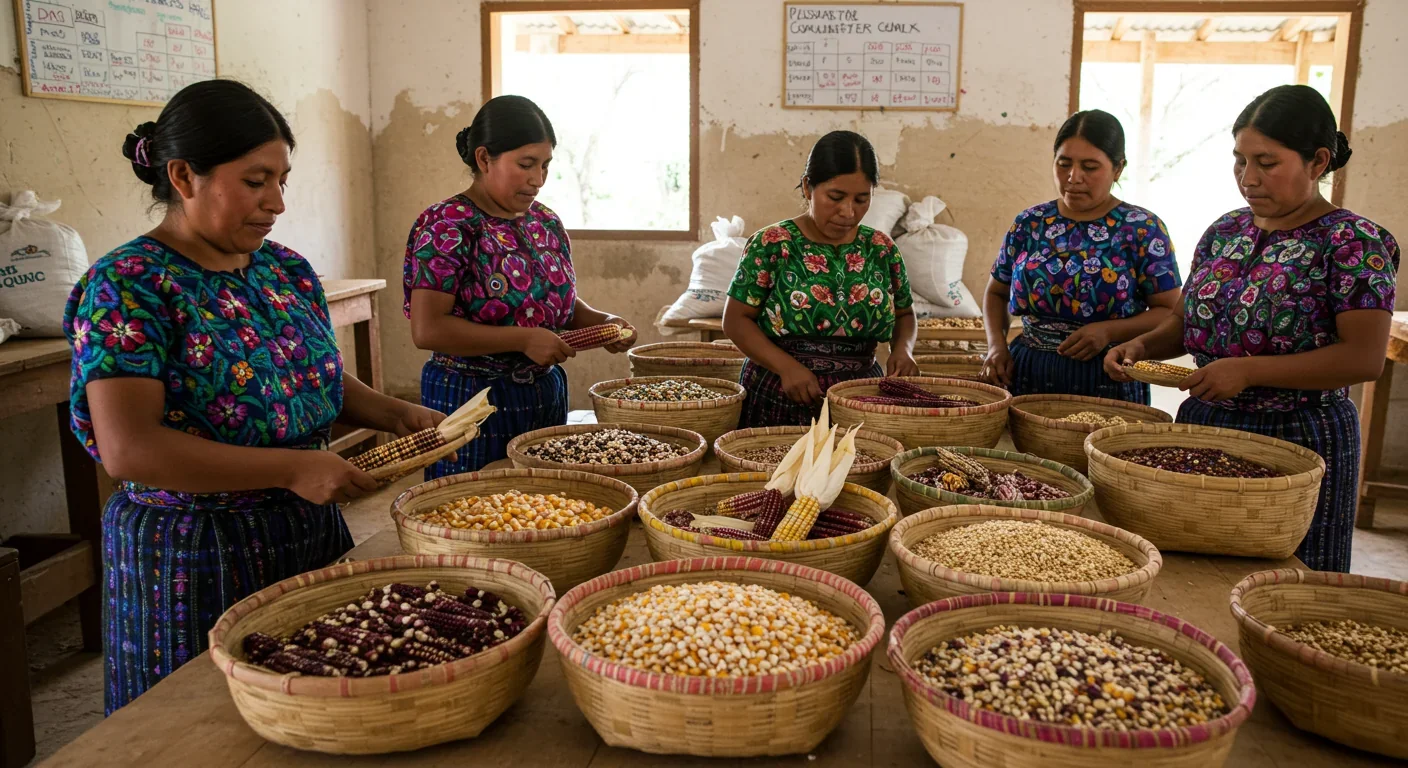
In California, the Occidental Arts & Ecology Center mixed more than 2,000 wheat varieties from the USDA seed bank and planted them across multiple sites. Each year, natural selection acts on the mixture, favoring varieties suited to local conditions. The result is a constantly evolving crop population that adapts to climate shifts without human intervention. "Evolutionary populations are not patentable," the project notes, meaning farmers retain control rather than ceding it to corporations.
This is the model that scales: decentralized, adaptive, farmer-managed. It bridges the gap between preservation and deployment.
Seed banks run on shoestring budgets. The Global Crop Diversity Trust was created to provide stable funding for international gene banks, establishing an endowment to cover ongoing operations. But most seed banks rely on inconsistent government grants and donor funding. When budgets get cut, regeneration schedules slip. Collections deteriorate.
Svalbard itself cost €8.3 million to build, €20 million to upgrade, and requires €1 million annually to maintain. Those upgrades weren't optional. In 2017, unusually warm weather and heavy rain caused permafrost to thaw and water to flood the entrance, threatening the seeds inside. Norway invested heavily in waterproofing and drainage improvements to prevent recurrence, but the incident exposed a troubling irony: the vault designed to protect food security from climate change is itself vulnerable to climate change.
"We need to move beyond vanity projects. It's not about building new vaults. It's about sustaining the ones we already have and using them better."
— Fiona Hay, Seed Conservation Researcher
And Svalbard has advantages most seed banks don't. It's backed by the Norwegian government, sits in a geopolitically stable location, and attracts international attention. Regional seed banks in developing countries don't have that luxury. They operate on margins so thin that a single equipment failure can jeopardize entire collections.
"We need to move beyond vanity projects," Fiona Hay argues. "It's not about building new vaults. It's about sustaining the ones we already have and using them better."
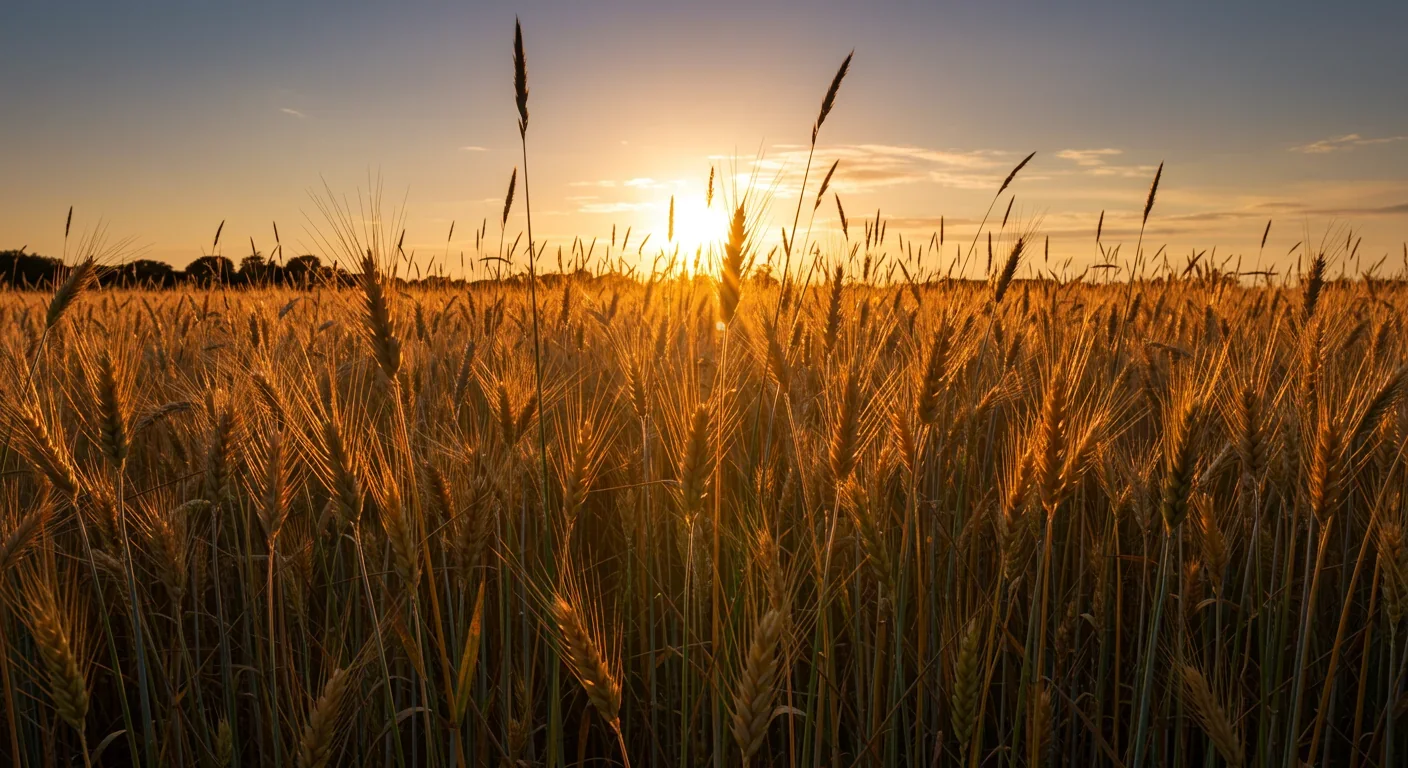
Here's the fundamental tension: seed banks preserve diversity by freezing it in time. But crops need to evolve to keep up with pests, diseases, and shifting climates. Seeds isolated from the environment do not evolve. If they're reintroduced decades later, they may be useless, unable to survive conditions that have changed since they were stored.
Think of it like restoring an old computer. The hardware might work, but the software is obsolete. Seeds stored in 1980 carry genetic adaptations to the climate of 1980. By 2050, that climate won't exist anymore.
This is why community seed banks matter. They don't freeze diversity; they cycle it. Farmers plant seeds, select the best performers, and save those for the next year. The population evolves continuously, tracking environmental changes in real time. It's messier than industrial seed banking, but it's alive.
Some researchers are exploring hybrid approaches. AI-based image analysis and automation are being trialed for seed sorting and characterization, potentially reducing human error and speeding up the registration process. Genomic tools allow breeders to identify useful traits faster, shortening breeding cycles. Digital seed databases make collections searchable, connecting breeders with the genetic material they need.
But technology can't solve everything. At some point, someone has to plant seeds, grow them out, and evaluate them in real conditions. That takes land, labor, and time. There are no shortcuts.
So where does that leave us?
Seed banks aren't a silver bullet. They're one layer of a defense-in-depth strategy. Svalbard and the global network of institutional gene banks provide long-term backup storage, ensuring that even catastrophic losses can be recovered. Community seed banks keep diversity alive and adapting in farmers' hands. Breeding programs translate stored diversity into improved varieties that farmers will actually plant.
All three are necessary. None is sufficient alone.
The most successful model integrates them. In Kenya and Uganda, community seed banks receive technical support from national gene banks while maintaining farmer control over seed selection and distribution. Indigenous knowledge combines with scientific expertise. Women play central roles, managing seed saving and strengthening social cohesion alongside agricultural resilience.
That kind of integration requires policy support. Governments need to fund seed bank operations as critical infrastructure, not discretionary research projects. International treaties need to balance benefit-sharing with timely access, so that genetic material reaches breeders before climate windows close. Farmers need legal protections for seed saving and exchange, preventing corporate consolidation from erasing the very diversity seed banks aim to preserve.
There are hopeful signs. The number of community seed banks has grown significantly in the past decade. Genomic tools are becoming cheaper and more accessible. Climate adaptation is rising on policy agendas worldwide. But the gap between preservation and deployment remains wide.
Climate change doesn't wait. Every year, temperature patterns shift a bit more, precipitation becomes a bit less predictable, and growing seasons change a bit faster. Crops can adapt, if we give them the right genetic tools and the time to evolve. Seed banks hold those tools.
The question isn't whether we need seed banks. We absolutely do. As Fiona Hay puts it: "Without seeds, there's no food, and without diversity in seeds, there's no resilience."
The question is whether we're using them fast enough and smart enough to keep pace with the challenges ahead. Right now, the answer is probably not. We're preserving seeds faster than we're deploying them. We're building vaults faster than we're breeding adapted varieties. We're treating seed banking as an end goal when it should be a starting point.
The good news is that we know what works. Community-led initiatives are proving that farmers can manage diversity effectively when given support. Genomic tools are accelerating breeding timelines. Policy frameworks exist; they just need funding and political will to implement.
The seeds are ready. The question is whether we are.
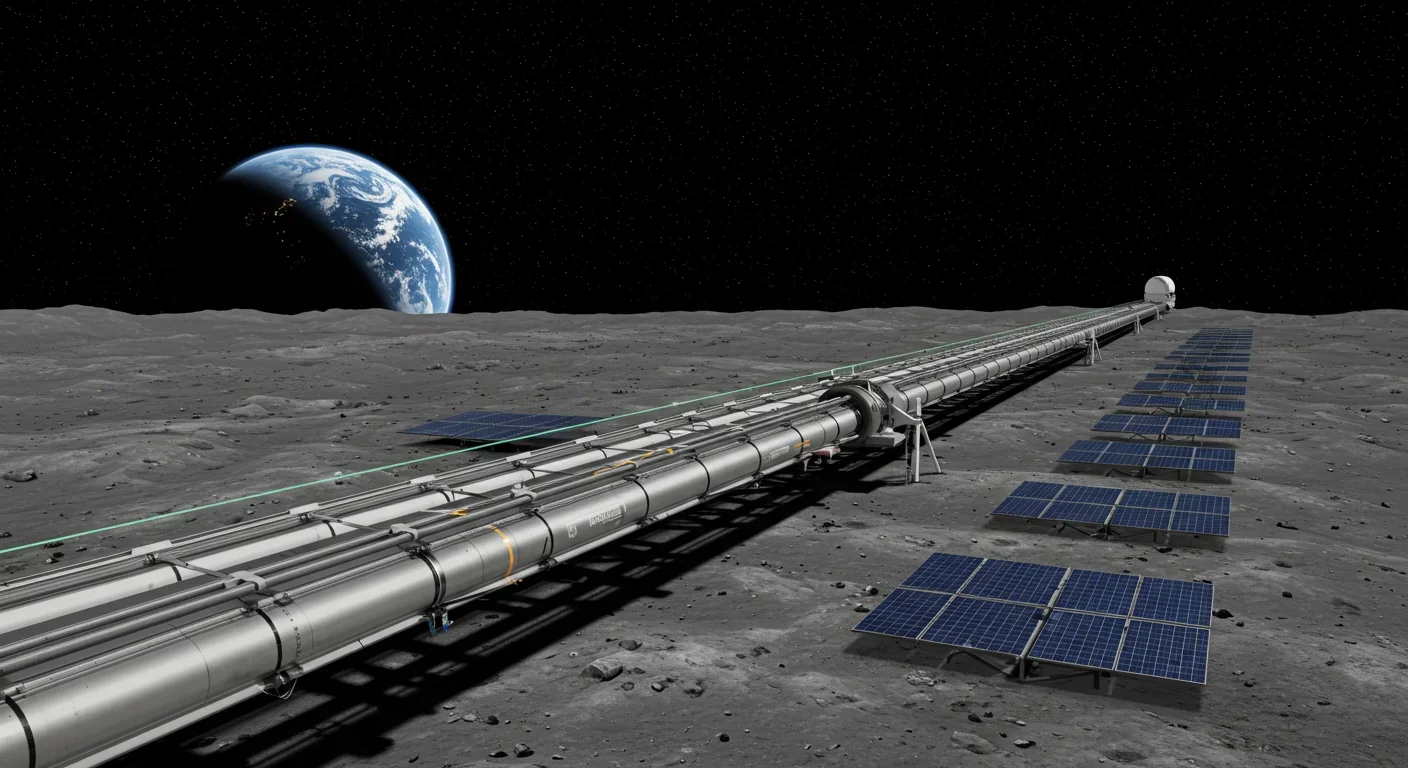
Lunar mass drivers—electromagnetic catapults that launch cargo from the Moon without fuel—could slash space transportation costs from thousands to under $100 per kilogram. This technology would enable affordable space construction, fuel depots, and deep space missions using lunar materials, potentially operational by the 2040s.

Ancient microorganisms called archaea inhabit your gut and perform unique metabolic functions that bacteria cannot, including methane production that enhances nutrient extraction. These primordial partners may influence longevity and offer new therapeutic targets.

CAES stores excess renewable energy by compressing air in underground caverns, then releases it through turbines during peak demand. New advanced adiabatic systems achieve 70%+ efficiency, making this decades-old technology suddenly competitive for long-duration grid storage.

Human children evolved to be raised by multiple caregivers—grandparents, siblings, and community members—not just two parents. Research shows alloparenting reduces parental burnout, improves child development, and is the biological norm across cultures.
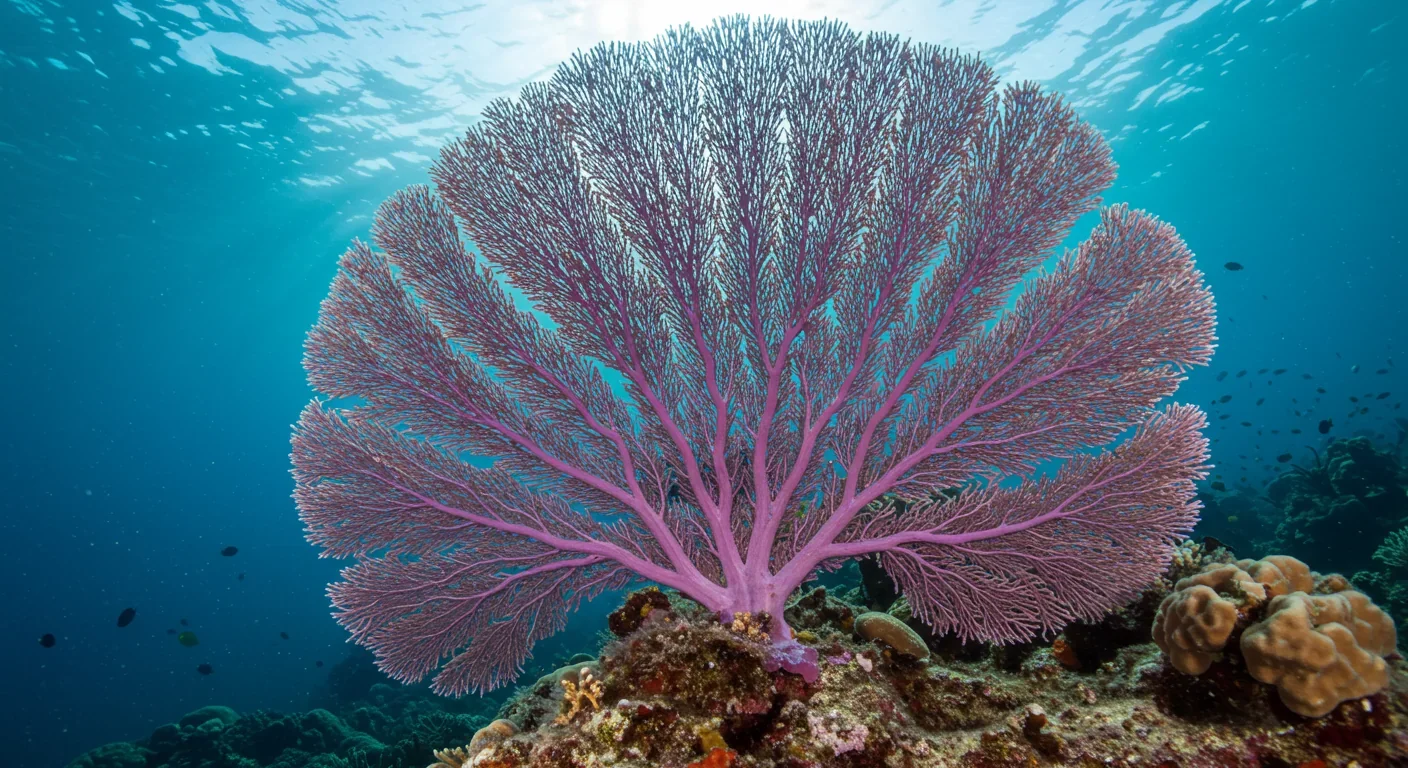
Soft corals have weaponized their symbiotic algae to produce potent chemical defenses, creating compounds with revolutionary pharmaceutical potential while reshaping our understanding of marine ecosystems facing climate change.

Generation Z is the first cohort to come of age amid a polycrisis - interconnected global failures spanning climate, economy, democracy, and health. This cascading reality is fundamentally reshaping how young people think, plan their lives, and organize for change.

Zero-trust security eliminates implicit network trust by requiring continuous verification of every access request. Organizations are rapidly adopting this architecture to address cloud computing, remote work, and sophisticated threats that rendered perimeter defenses obsolete.